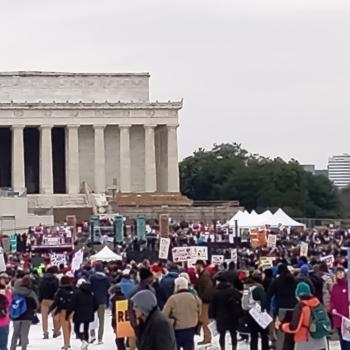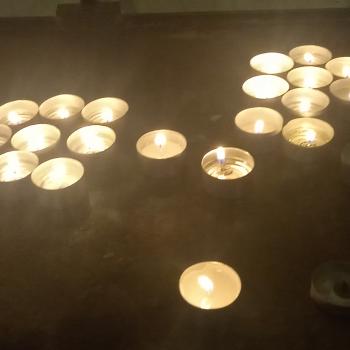[The following is a guest post by frequent commenter Jordan – Matt]
A recent article by Jason Dempsey (“Does the NRA Want to Turn America Into Afghanistan?”, Foreign Policy, 16 January 2013) explores resemblances between the pervasive gun culture of Afghanistan and certain aspects of the way in which guns have pervaded American society. Dempsey, a soldier who currently serves in Afghanistan, steers his argument away from the current roiling debate over federal and state gun control laws. Rather, he focuses on the possible repercussions of a society which responds to large-scale civilian gun violence with greater civilian armament. Dempsey concludes that the public policy positions of some pro-gun advocates, such as advocacy for the placement of armed guards in every school, reflect a societal attitude towards guns not dissimilar to the place of guns in Afghan culture.
Dempsey’s article indicts certain extreme positions within the pro-gun-rights movement as corrosive to a rule-of-law state. In his view, persons and organizations which advocate for even more armament after grave shooting tragedies instead enervate the civil, legal, and social structures Americans have carefully crafted over the centuries to ensure a peaceable society. Dempsey’s scathing criticism of the NRA derives not from a revulsion towards guns or a desire for firearm abolition; indeed, he grew up within a gun owning household and currently owns a firearm. Rather, Dempsey strongly criticizes the telos of extreme positions within the gun-rights movement. The “maximalist position”, which he attributes to leading pro-gun-rights advocates such as NRA executive vice president Wayne LaPierre, advances that every American citizen should own a firearm. Dempsey counters gun-rights maximalism through two arguments. First, he contends that the civil structures of America, such as the courts and law enforcement, uphold orderly justice much more effectively than the vigilantism of maximialist firearm anarchy. Second, Dempsey contends that a call for a maximal level of civilian firearm ownership not only represents a certain paranoia, but also reflects an erroneous notion that the United States is a “failed state” where honor-shame compacts determine social order. As Dempsey reminds us, “We need to remember that we are not a state on the brink of failure. The overwhelming majority of us are not in mortal danger and we do not need to be packing heat to protect our honor.”
Perhaps not a few Americans disagree with Dempsey. As a counterargument, he offers this characterization of Pashtunwali, or as he terms it, the “tribal code of the Pashtuns” of Afghanistan. Dempsey writes:
Pashtunwali, the tribal code of the Pashtuns, which emphasizes vengeance and honor, can be confusing for Westerners, and its outcomes can seem downright incoherent. An attempted murder can be reconciled with the sacrifice of a goat while a couple that elopes may be sentenced to years in prison, or simply killed. These outcomes have nothing to do with justice as we commonly understand it, but are part of a necessary dance among armed factions, each seeking stability in a desperate environment. Honor and vengeance represent both sides of the coin of insecurity, and Pashtunwali is most easily understood not as a cultural code but as realpolitik for places where the threat of violence is ever-present and people cannot rely on their government to provide stability. In such an environment, there is little room for individual freedom and justice. There is only the survival of the family and tribe. Everyone is armed. Everyone is defensive. And society is congealed into those elements that can best ensure stability. Eventually loyalty trumps justice, and survival trumps all.
While Dempsey amply connects the perils of American gun anarchy with the possible dissolution of civil society, he declines to speculate about possible resemblances between Pashtun honor codes and aspects of American gun culture. Certainly, I doubt that an direct correlation exists between Pashtun honor codes and honor-shame conventions among American gun owners. Also, I must admit that I was raised in a very anti-gun Northeast bourgeois household. Indeed, my family considered overt gun ownership to be declasse at best. However, I now know that American gun ownership cuts across ethnic, socioeconomic, geographic, and religious lines.
Despite this, I have often wondered if certain aspects of American gun-rights maximalism reflect an honor-shame code similar to Pashtun society. I have often wondered if a firearm maximalist who amasses for himself or herself a arsenal considers the relationship between citizens not primarily from a civil-legal-judicial aspect but rather from a anarchical honor-shame aspect. Indeed, perhaps a person’s open display of his or her arsenal serves not only as an deterrent against assault or theft but also as a warning for persons within a familial or social group who might affront the arsenal owner’s dignity and honor. Similarly, American gun violence might reflect certain illogical consequences of a honor-shame system not inconsistent with Pashtun honor code practices.
While Dempsey’s article strongly and articulately defends the rule of law from gun-rights maximalists, a more thorough understanding of firearm maximalism requires both a macroscopic legal view and a microscopic anthropological view. I have found little objective analysis of the latter. An analysis of the interpersonal relationships between gun maximalists should accompany, and not follow, an ongoing legislative debate over firearm sales and possession.












